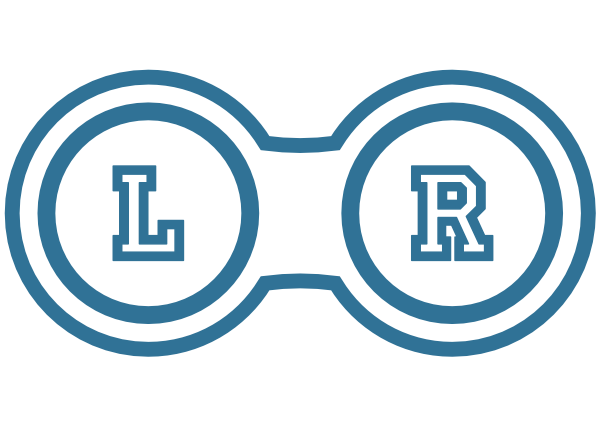Q: How often should children have their eyes examined?
A: The American Optometric Association (AOA) states that infants should have their first comprehensive eye exam at 6 months of age. After 6 months, children it is recommended that routine eye exams occur at age 3 and again at age 5 or 6 (just before they enter kindergarten or the first grade).
For school-aged children in Northern Colorado, a routine eye exam every is recommended every two years if no vision correction is needed. Children who do end up needing eyeglasses or contact lenses should schedule eye exams yearly.
Q: My 5-year-old daughter just had a vision screening at school and she passed. Does she still need an eye exam?
A: Yes. School vision screenings here in Fort Collins, Loveland and Greeley are very broad and are designed to detect general vision problems. Your child could pass a school vision screening and still have vision issues that could negatively affect their learning and performance at school. Comprehensive eye exams conducted by an optometrist are able to detect vision issues that sa screening at school would not be able to expose. A comprehensive eye exam also includes an evaluation of your child’s overall eye health, which is not part of a school vision screening.
Q: What is vision therapy?
A: Vision therapy (also called vision training) is a customized schedule of eye exercises and other disciplines to correct vision problems other than nearsightedness, farsightedness and astigmatism. Some of the vision issues that can be treated with vision therapy include amblyopia (‘lazy eye”), eye movement and alignment problems, focusing problems, and certain visual-perceptual disorders. Vision therapy most often takes place in an optometrist’s office, but the majority of treatment schedules also include daily vision exercises that would need to be completed at home.
Q: Can vision therapy cure learning disabilities?
A: No, vision therapy cannot correct learning disabilities. Many times a child that has learning disabilities also has vision issues as well. Vision therapy may be able to correct some underlying vision issues which might be contributing or adding to a child’s learning problems.
Q: Our active 1-year-old needs glasses to correct his farsightedness and the tendency for his eyes to cross. But he pulls them off the second they go on. We’ve tried an elastic band, holding his arms, tape… He just struggles and cries. How do we get him to wear his glasses?
A: In most cases, it just takes awhile for a toddler to get used to the sensation of wearing glasses. Keeping this new thing for him a positive experience and persistence is key. Also, you might try putting his glasses on him as soon as he wakes up in the morning – this routine will usually help him adjust to wearing the glasses a lot easier.
If the problem persists, it is a good idea to stop in and recheck the prescription. We can make sure his glasses were made correctly and are fitting properly. Here in Northern Colorado there are a lot of different options as far as styles of frames for young children, including some awesome ones that come with an integrated elastic band to help keep them comfortably on the child’s head. We have seen many parents and children who find this to be a great solution. Bring your son and his eyeglasses to our office. Even if you didn’t purchase the glasses from us, we will be glad to see if we can help with the issue regarding why your son is having a tough time wearing them and what you can do about it.
QF:F Our 3-year-old daughter was just diagnosed with strabismus and amblyopia. What are the percentages of a cure at this age?
A: If she receives that correct treatment the odds are in her favor. There are many researchers who now believe that the overall visual system is able to continue to develop greater visual acuity up to age 8 to 10. If you find that your daughter’s eye turn (strabismus) is fairly constant, she will most likely need surgery in order for her eyes to straighten in order for her therapy for amblyopia (or “lazy eye”) to be successful. Strabismus surgery may be needed even if her eyes alternate in their misalignment. Please see a pediatric ophthalmologist who has experience in and specializes in strabismus surgery for additional information.
Q: My daughter (age 10) is farsighted and has been wearing glasses since age two. We think she may have problems with depth perception. How can she be tested for this, and if there is a problem, can it be treated?
A: Here in Fort Collins, Loveland and Greeley we can easily perform a very simple stereopsis test to see if your daughter has normal depth perception. During the test she would wear “3-D glasses” as she would look at a range of objects in a special book or on a chart across the room. If we find that she does have reduced stereopsis, a program of vision therapy might be able to help improve her depth perception.
Q: We have an 11-year-old son who first became nearsighted when he was 7. Every year, his eyes get worse. Is there anything that can be done to prevent this?
A: Rigid gas permeable (GP) contact lenses might be able to help. Research has shown us that, in a great number of cases, fitting children with GP lenses might just slow the progression of their nearsightedness. There is a special fitting technique now with GP contacts called orthokeratology (or “ortho-k”) that has the ability to reverse certain amounts of myopia. Recently there has been research which suggests bifocals and/or reading glasses might reduce the pace of the progression of myopia in some youth.
Q: My 7-year-old son’s teacher thinks he has “convergence insufficiency.” What is this, and what can I do about it?
A: Convergence insufficiency (CI) is a common learning and work related vision problem where a person’s eyes alignment changes when they are doing work or reading up close. For comfort while doing close up work or reading a person’s eye need to be pointed in slightly (converged). A person with convergence insufficiency finds close up work and reading challenging because their eyes have a difficult time pointing in a little. This can lead to strain on the eyes, headaches, fatigue, blurred vision and reading problems. Most of the time in Northern Colorado, a vision therapy schedule can effectively treat CI and reduce or eliminate these issues. Special reading glasses may be able to help some people as well.
Q: My son is 5 years old and has 20/40 vision in both eyes. Should I be concerned, or could this improve with time?
A: Most 5-year-olds are able to see 20/25 or better. Visual acuity testing is quite a subjective matter. During the test, your child is asked to read smaller and smaller letters on a wall chart. Sometimes, kids lose interest and give up at a particular line on the chart when they can really read much smaller letters. Still other times, we have seen kids say that they can’t read smaller letters because they want glasses. (Yes, this can and does happen!) If your child had his vision tested at a school screening (where there can be plenty of distractions), it is always an excellent idea to call and schedule a routine eye exam with the eye doctor to be able to rule out nearsightedness, astigmatism or any eye health issues that may be keeping him from having better visual acuity.
Q: My daughter has been diagnosed with refractive amblyopia due to severe farsightedness in one eye. She just got her glasses and the lens for her bad eye is much thicker than the other lens. She complains that the glasses make her dizzy and she refuses to wear them. Can anything be done about this?
A: It is common that when one eye is in need of a much stronger correction than the other eye, contact lenses are usually a much better choice. With glasses, the unequal lens powers being farther away from the surface of the eye can cause an unequal magnification effect. The two eyes will then form different images in the brain that are differing sizes. This difference can and usually does cause nausea and dizziness because the brain is not always able to blend the two separate images into a single, three-dimensional one that makes complete sense. Not to mention that the glasses themselves will be unattractive because one lens will be much thicker than the other lense.
Even if your child is quite young, she would most likely be able to handle contact lens wear. Now, in Fort Collins, Loveland and Greeley, contact lenses, because they are applied directly onto the surface of the eye, don’t cause the difference in image magnification the way that glasses do. Continuous wear lenses (worn day and night for up to 30 days, then discarded) or one-day disposable lenses may be excellent options for a child or youth.
Please keep in mind that amblyopia is a condition where one eye simply doesn’t see as well as the other, even with the best possible correction lens in place. Wearing the contacts alone might not improve the vision in her weak eye. Most often a schedule of vision therapy will also be needed.
For additional information or to schedule an appointment, please call 970-204-4020 or click on the link on the side of the page.






